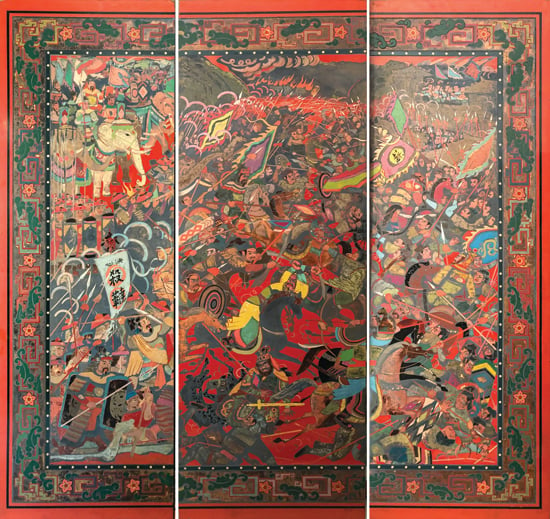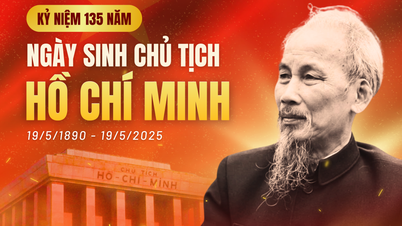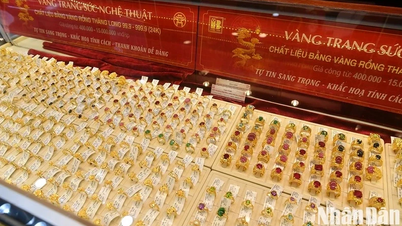
NGUYEN GIA TRI – Battle of Bach Dang. Circa late 1950s early 1960s. Lacquer. (220x75cm) x3. Collected by Nguyen Minh, Hanoi
From studies on Nguyen Gia Tri's biography and artistic process, we can estimate that the painting "Battle of Bach Dang" was created by him around the late 50s and early 60s of the last century. This was a special historical period, full of turmoil, not only for him personally, but also for the whole country, when war, division, and separation were having very strong and multifaceted impacts on political life, society, ideology and the individual fate of each person, giving rise to the spiritual division of artists into two directions. One, in the North, evolved and developed under the influence of socialist realism. Two, in the South, was under the influence of Western capitalist art schools. Of course, all of these influences are within the realm of possibility, they need to be reborn once again in the creative process of each artist. At that time, the search for ancient historical themes, as in this case of Nguyen Gia Tri (showing the heroic spirit of our people against the Yuan-Mongol invaders), actually received less attention in the North, because in the North, modern historical themes and revolutionary history seemed to be the top priority. This difference also deeply reflected the political situation at that time in the North and South. * * * Painting an ancient historical theme is always a great challenge for the artist, even much more difficult than painting a mythological theme. History is a past reality, and most of it has passed a long time ago, but viewers still have the knowledge, experience and intuition to verify their beliefs about history before the artists' creations in this field. Therefore, even though the main aim is spiritual effect, the painter still cannot ignore the typical and authentic historical elements, from the plot, setting, characters to costumes or props... * * * The most significant value of the painting "Battle of Bach Dang", also known as "Sat That", is that in addition to basically meeting the requirements for a historical painting, the author Nguyen Gia Tri also left a special mark of his art. Originally a great newspaper print painter and illustrator, especially during the period when he collaborated with the newspaper "Ngay Nay" in the years 1936-1940, here, Nguyen Gia Tri continued to promote the application of the unique painting structure, line drawing, figurative drawing, and coloring of the Hang Trong folk painting line, turning the complex into the simple, by putting everything into a system of diagrams, and enlivening the details with sharp stylization techniques. Unlike the paintings of young women, the lacquer technique here is more uniform, very close to the technique commonly seen in ancient lacquer paintings, the colors are very simple, somewhat primitive, using cockroach wing lacquer as the main hidden color, covered in color, to create countless shades of red, black and a precious "scrap bottle" green, putting the scene behind a layer of smoke and mist from which resounding sounds still emanate.Nguyen Gia Tri's painting talent, through this historical painting, has been proven once again.
In 1998, many newspapers, especially those in Ho Chi Minh City, reported on the “discovery” of a lacquer painting by Nguyen Gia Tri. It can be said that this is a strange painting, both in subject matter and in expression compared to what people previously knew about his art.
The painting consists of four panels, that is, in the style that Nguyen Gia Tri preferred, which has long been called a "screen". In addition to the main theme, he also developed decorative borders around it to increase the antique look.
Unfortunately, one panel is missing from the painting, the second from the left, which disrupts the overall composition.
But the painting does not lose its main spirit because the large, main images, fortunately, were placed by the author on the leftmost panel, next to the missing panel. Basically, the contrast - the most important thing in a historical battle painting - is still preserved.
 NGUYEN GIA TRI – Battle of Bach Dang. Circa late 1950s early 1960s. Lacquer. (220x75cm) x3. Collected by Nguyen Minh, Hanoi
NGUYEN GIA TRI – Battle of Bach Dang. Circa late 1950s early 1960s. Lacquer. (220x75cm) x3. Collected by Nguyen Minh, HanoiFrom studies on Nguyen Gia Tri's biography and artistic process, we can estimate that the painting "Battle of Bach Dang" was created by him around the late 50s and early 60s of the last century. This was a special historical period, full of turmoil, not only for him personally, but also for the whole country, when war, division, and separation were having very strong and multifaceted impacts on political life, society, ideology and the individual fate of each person, giving rise to the spiritual division of artists into two directions. One, in the North, evolved and developed under the influence of socialist realism. Two, in the South, was under the influence of Western capitalist art schools. Of course, all of these influences are within the realm of possibility, they need to be reborn once again in the creative process of each artist.
At that time, the search for ancient historical themes, as in the case of Nguyen Gia Tri (showing the heroic spirit of our people against the Yuan-Mongol invaders), actually received less attention in the North, because in the North, modern historical themes and revolutionary history seemed to be the top priority. This difference also deeply reflected the political situation at that time in the two regions of the North and South.
* * *Painting a historical subject is always a great challenge for an artist, even more difficult than painting a mythological subject. History is a past reality, and most of it has been gone for a long time, but viewers still have the knowledge, experience and intuition to verify their beliefs about history before the artists' creations in this field.
Therefore, even though the main aim is spiritual effectiveness, the artist still cannot ignore the typical and authentic historical elements, from the plot, setting, characters to costumes or props...
* * *
The most significant value of the painting “Battle of Bach Dang”, also known as “Sat That”, is that in addition to basically meeting the requirements for a historical painting, the author Nguyen Gia Tri also left a special mark of his art. Originally a great newspaper print painter and illustrator, especially during the period when he collaborated with the newspaper “Ngay Nay” in the years 1936-1940, here, Nguyen Gia Tri continued to promote the application of the unique painting structure, line drawing, shape drawing, and coloring of the Hang Trong folk painting genre, turning the complex into the simple, by putting everything into a system of diagrams, and enlivening the details with sharp stylization techniques. Unlike the paintings of young women, the lacquer technique here is more uniform, very close to the technique commonly seen in ancient lacquer paintings, the colors are very simple, somewhat primitive, using cockroach wing lacquer as the main hidden color, covered in color, to create countless shades of red, black and a precious "scrap bottle" green, putting the scene behind a layer of smoke and mist from which resounding sounds still emanate.
Nguyen Gia Tri's painting talent, through this historical painting, has been proven once again.
(Collect)


![[Photo] Prime Minister Pham Minh Chinh chairs the Government's special meeting on law-making in May](https://vphoto.vietnam.vn/thumb/1200x675/vietnam/resource/IMAGE/2025/5/22/1c880aae96fd4e0894abc47a46fe19ba)



![[Photo] Prime Minister Pham Minh Chinh attends the groundbreaking ceremony of Trump International Hung Yen Project](https://vphoto.vietnam.vn/thumb/1200x675/vietnam/resource/IMAGE/2025/5/21/ca84b87a74da4cddb2992a86966284cf)














































































Comment (0)